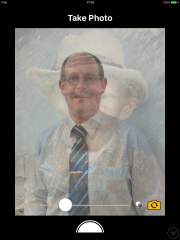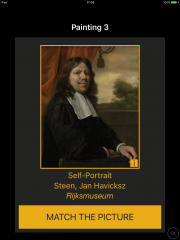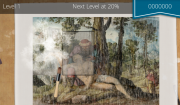- Pilot Coordinator: COVUNI
The Europeana Space Games pilot wanted to examine how the highly engaging principles of gaming can be applied to digital archives and their content in order to create new prototypes for future games applications.
The aim of the Pilot is to encourage use and experimentation of the Europeana and other online repositories by providing game demonstrators across a range of demographics. This involved three distinct development phases:
- storyboarding user experience and system architecture;
- rapid prototyping of games;
- iterative testing until release.
The Games pilot produced three game demonstrators:
The Casual game demonstrator focusses upon restoration of paintings drawn from Europeana. Based upon the 1980s arcade game QIX, users have to clean/restore paintings quickly; if this generates a sufficient score, they progress to the next painting. The game demands focus and speed, and encourages the player to engage with cultural heritage through a process of revelation of the painting. Information about the artist, title and location of each painting is available within the credits section, and via the Information tab.
The Creative game demonstrator allows users to create remixes of video content, based upon the simple drag and drop technique. It is themed around dance and the playful experience of mixing and matching archived videos of contemporary dance in order to create new ‘mashups’. Players are presented with a library of dance clips video content that has been curated by the members of the Games and Dance Pilots which they are then able to sequence together on a timeline. Attributions are clear, meaning that the user is able to conduct further research of these clips via Europeana.
For the Educational game demonstrator users are presented with a portrait from Europeana; they are challenged to recreate it either by taking a selfie or taking a photograph of friends. The game encourages close engagement with the painting, and draws users in through its relationship to the popular ‘selfie’ craze. Once the picture has been taken, a series of colour and tone filters can be added to alter the picture; the objective is to get the photograph as close to the original picture as it possible. For each portrait, information is available relating to archive source, the artist, arts and historical context for the image.







































